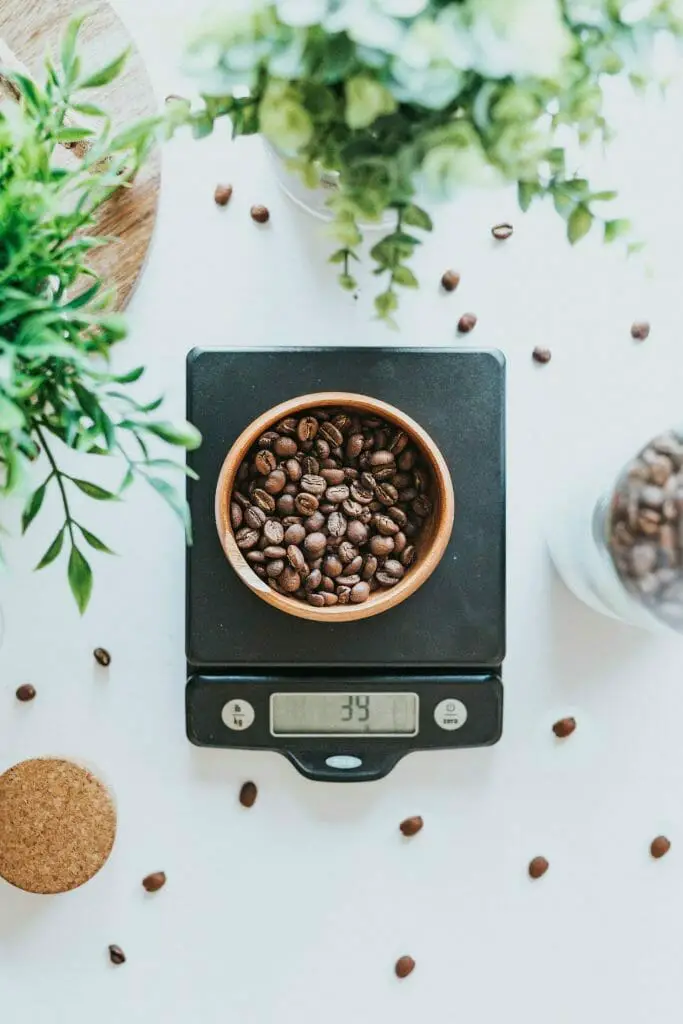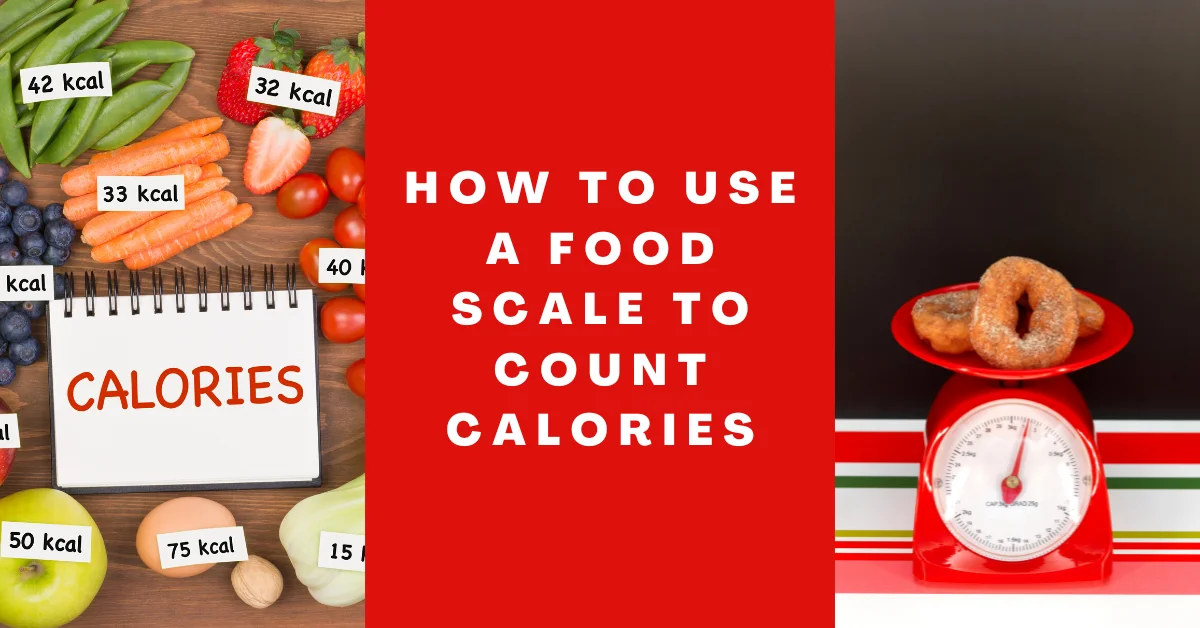Wondering how to use a food scale to count calories?
One thing that’s even harder than exercise is diet control. Going to the gym is easy but portion control is a whole different ball game. Watching serving sizes and counting calories is difficult especially when there is no accurate method to measure calories. Well, this was true until I found out about the food scale.
Yes, I was just as surprised!
What is a food scale you ask? A food scale teaches you how to control your portion sizes and keeps you from over-eating. It can be used for any diet plan, especially the ones that are quantified. According to the national survey, more than 6000 adults have shown successful results who happened to use a food scale for diet control.
How does a food scale work?
When starting on a diet it is important to learn the correct serving sizes for each nutrient category. A food scale will teach you the weight of the food you are about to consume. Such mistakes in measurement can turn your whole diet plan upside down.
Dietitians stress the fact that food scales along with cups and spoons are essential tools to carry out your diet plan successfully. Meat and Cheese are the best measures using a food scale while cups are best for pasta and rice as well as fruits and vegetables.
As a general rule, you should measure your food after it has been cooked. A food scale comes in handy when preparing meal plans or recipes that require ingredients to be weighed.
How to choose the best food scale?
Food scales come in different shapes and sizes. They range from a plastic cup to a small plastic tray to even old-school weighing scales used for meat. Some of these are expensive and come in the form of digital scales too. All of these give complete nutritional information for every size of the serving. Some of the best food scales have the following characteristics:
- Not too heavy on the pocket
- Easily readable numbers
- A cup or a bowl of average size to measure your meals
- Easy to clean up
Obesity is harmful to health. Investing in a food scale is a great idea when starting on a weight loss journey. Buying tools that can motivate you toward your goal is always a good idea. In a review of research regarding portion control, the NCCDPHP found out that many Americans are unaware of the difference that lies between portion and serving size.
Learning how to use a food scale helps create a bridge over the knowledge gap. It helps people figure out the right serving size for particular food categories and naturally helps you cut down on calories.
It may seem difficult to understand a food scale at first sight but don’t worry by the end of this article you will be a pro weight watcher. The article focuses on how to use a food scale to count calories and includes some tips on being successful at it!
How to use a food scale to count calories?
Step 1: Identify the best food scale type
Identify the type of food scale you wish to use. To some people, the digital scale seems the most convenient option. Digital scales give exact numbers which are pretty easy to read. Other options could be a spring balance or an analog weight scale. While making your decision focus on the scale that is within your budget, easier to read, can hold your serving size easily, and is easy to maintain.
Step 2: Read the food scale’s manual
Do manage to read the manual that comes with your scale. Most scales do not come with a manual except the digital ones with advanced features such as a calorie converter and those that show nutritional values. Reading the manual helps you better understand the machine and helps you learn its advanced features.
Step 3: Reset the food scale
Before you begin measuring, make sure to press the reset button. Ensure that the scale reads zero before you add your food to it. This may be as simple as pressing the power button and waiting for the display to show but is often forgotten. The spring scale might not require it while for some you may need to turn the knob back to zero.
Step 4: Cut the weight of the container
If you will be using an external bowl or the tray provided by your food scale, then make sure to weigh the empty external bowl. If you’re using the tray that comes with the food scale, then make sure to place it on the scale and then set it to zero. For the external container, you can subtract its weight after you’ve measured your food.
Step 5: Place your food on the food scale’s platform
Set your food portion in the container on the scale. For manual food scales, give it a few moments to settle on a number. For a digital scale, the weight is automatically displayed. To use the advanced feature follow the manual’s guidelines.
Step 6: Use basic mathematics to count calories
Use the label on your food to check how many calories it has per ‘X’ amount of servings. Use basic mathematics and you’ll get the calorie count in your food.
Tada! Your step-by-step guide to using a food scale to count calories.

Tips on how to use a food scale to count calories
To get an accurate number of calories there are a few tips that might help you streamline the calorie counting process.
1. Using tech tools to your advantage
Do not rely on assumptions. Keep a journal to track your meals. Knowing the exact number will help track your progress better. Assuming portion sizes is the last method you should be following to get a precise number of calories consumed. Not having an exact number and foggy memory of your meals can make it difficult to see any visible changes.
Rather consider investing in a calorie-tracking app for your smartphone. Record all the portions you ate or get a small journal that you can keep handy. Remember the goal here is to stay motivated and have an accurate calorie tracking mechanism wherever you go.
2. Portion measurement
Jot everything down and leave nothing to the imagination. People often fail to accurately estimate their required food portions. There is always a favorite food that you can’t stop yourself from excessively eating. Cereal is one great example of such food. I suggest that you invest in a digital kitchen scale that way you wouldn’t have to worry about the accuracy.
3. Be thorough
While you nibble on your snacks do make sure you scale them too. Anything you eat should be recorded. Even if it is as small as a bite from your partner’s plate. Make a habit of writing everything down. Anything that goes into your mouth needs to be recorded. You’ll be surprised to know how many calories you were not considering. This is an extremely useful way to count calories!
4. Stay on Budget
While on the hunt for a good food scale make sure to stick to your budget. There is no need to buy such expensive tools or you might lose the purpose you were buying it in the first place. There are a lot of different gadgets and tools at a range of different prices. You just need to make sure that you get the one that does the job smoothly.
There is no need to spend hundreds of dollars on it. Take your lifestyle and eating habits into account as well before you make your purchase. Some people sit in front of a computer all day so using online tools is easier for them. Some people eat on the go so a traditional pen/paper method works for them. Make sure that whatever way you choose to record your calories suits you.
5. Record Macros and Exercise
Calorie counting isn’t all that you need to shed some weight. Working out and recording macro-nutrients is just as important. Depending on the equipment you use, you need to be able to track your fiber and sodium intake as well. An adequate amount of fiber in your everyday meals helps improve digestion. The right amount of exercise is equally significant to see effective results.
Tracking macro-nutrients such as proteins, carbohydrates, and fats should also be given importance. Especially if you are trying to control your carbs. Such a diet is called the keto diet and is extremely helpful in promoting the process of ketosis to remove unhealthy carbs from the diet. There are many mobile apps available that help you record the numbers once you’ve filled out your meals.
Final words
Learning the habit of using a food scale before meals can seem a hefty task especially when you are starving. Allow yourself time to adjust to this new routine and don’t be too hard on yourself. I’d say have plenty of fruits for snacks while you prepare your meals and don’t let yourself stay starving for too long. All in all, keep yourself hydrated and if you’re motivated enough you will achieve your goal!
So, what do you think? Let us know your thoughts and opinions on how to use a food scale to count calories!
More articles…
- Best kitchen towels that don’t smell
- Essential kitchen tools and utensils names and uses
- Top kitchen items under $10
- Why your child must know how to cook
- Best ways to clean and organize a kitchen
- 10 Best food scale for meal prep
- Best water dispenser bottom load
- How to unclog a double kitchen sink with standing water



